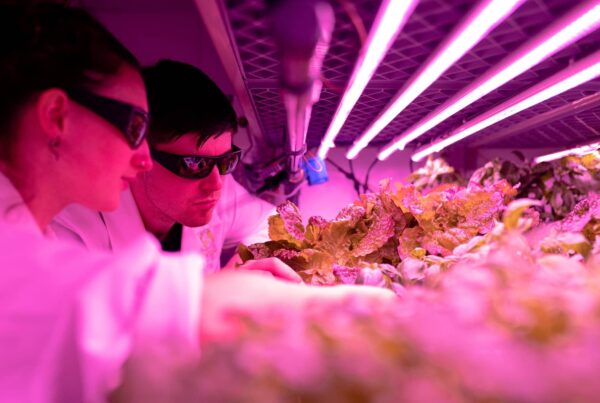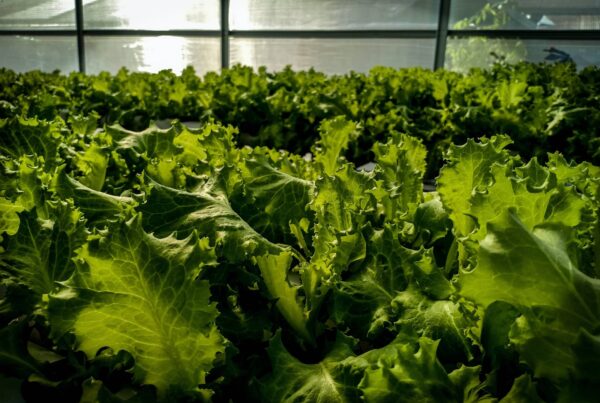Highlighting facts and proposing a collaborative path forward
California’s cannabis industry has recently been contemplating the Statewide Codes and Standards Enhancement (CASE) Team’s proposed code change proposals to the Energy Code as market actors assess potential impacts on cultivation operations. With a statewide cannabis market in disarray and the industry calling for a significant overhaul of the complex patchwork of agency regulations on cannabis businesses, concern over yet another set of rules is understandable.
As objective analysts and advocates representing efficiency-focused organizations, we have been involved in several state efforts to develop policies to curb the energy use and greenhouse gas emissions impacts of indoor cannabis cultivation. Central to our work is ongoing engagement with cultivators, facility designers, and equipment manufacturers to make sure their experience is represented as policies are crafted and their needs are considered as policies are implemented.
We also share a commitment to the urgent action demanded by the threat climate change poses to human health, the economy, and agricultural systems. While we acknowledge that the cannabis industry is rapidly evolving, our experience gives us confidence that the technologies and approach outlined in the Statewide CASE Team’s proposed code change proposal can meet a range of cultivator needs while reducing energy and climate impacts.
Codes + collaboration can lead to cultivator success
The way we see it, the long-range code change proposals currently being shaped represent California’s attempt to put one piece of the efficient cannabis industry puzzle into place. There are many more pieces—incentives, financing, education, and technical assistance–on the figurative card table. In collaboration, we can assemble these pieces to achieve the vision most share: a sustainable, resource-efficient, equitable, and resilient cultivation marketplace.
The California Energy Commission process provides the time to enact this vision. The updated code is expected to become effective on January 1, 2023, about 2.5 years from now. Permits pulled for projects on or after that date would need to follow the new rules. For perspective, here’s what was happening 2.5 years ago:
- California’s adult use market was just opening
- Trump was completing the first full year of his presidency
- The Hollywood-inspired #TimesUp movement was initiated
- Black Panther was released
- Climate disruption led to the planet’s second hottest year on record and yet another record year of negative impact on the economy
In this blog post, we’ll provide information surrounding the Title 24 code and the proposed requirements for controlled environment horticulture to help cultivators make sense of the real implications and options for their business. And, importantly, we’ll recommend complementary policies and programs the State should implement to support cultivators and ensure climate goals are met. We emphasize the lighting requirements given the outsized attention on them relative to the more straightforward dehumidification and greenhouse building envelope measures.
Facts about the 2022 Energy Code proposals
Fact #1: The proposed code would apply to new construction and major upgrades, not existing facilities
- The code would apply only to new construction and major upgrades.
- There would be no requirement for existing facilities to switch out HID lighting, either immediately or in the future.
- Existing cultivation operations can continue to use HID lighting, even beyond the 2023 effective date, until they are ready for a significant retrofit.
- Cultivators who currently use high pressure sodium, ceramic metal halide, and other lighting solutions could, over time, replace small portions (e.g., less than 10%) of their canopy area to avoid triggering “major upgrade” criteria.
Fact #2: Utilities can continue to offer efficiency incentives for new and existing cultivation facilities
- At a minimum, incentives that are available now will likely be available through December 31, 2022. If you are interested in efficient technologies, now is a good time to consider them with your utility or incentive program contacts.
- Between now and December 31, 2022, cultivators can educate their incentive program providers about ways they generate savings in their facilities. With this “custom analysis” approach, cultivators throughout the country are often eligible for larger incentives than they would be under prescriptive rebates for individual products or systems.
- There are already products on the market that are significantly more efficacious than the proposed code minimums and even more efficient products are in development. These products offer ongoing opportunities for greater energy savings and incentives.
- The reality is, codes don’t replace incentives; they merely force incentive program designers to be more creative in understanding and supporting their customers and recognizing that the energy code represents the “new normal.” Measures are codified when they are ready to be standard practice and graduate out of the need for incentives to support their use.
- In Massachusetts, where similar standards preferring LED lighting solutions have been put into place, incentive program providers and their customers are working together to determine incentives beyond the regulated limits, for example, lighting solutions above the code minimums, HVAC and dehumidification controls and automation, and centralized strategies.
Fact #3: Cultivation operators have time to minimize financial downside and improve financial upside
- While capital expense increases are certain to impact those who don’t plan for them, there are several strategies cultivators can employ now to brace for the change. At a minimum, start testing lighting options and talking with your utilities to maximize learning and incentives.
- The reality is, all California commercial buildings will need to meet Zero Net Energy requirements by 2030. Renewable energy systems are generally three times as costly as efficiency investments.
- In terms of operating expenses, effectively engineered and implemented LED lighting and HVAC strategies can save up to 50% of total energy costs, with potential for increased yield and quality.
- The sooner cultivators embrace efficiency, the more it’ll pay off, both in terms of capital expense and operational expense savings. With less than a three-year simple payback for indoor facility LED lighting, one could actually argue that these codes are in the financial best interest of cultivators.
Energy codes are a well-established policy for shifting the baseline requirements for facility energy use to keep up with advances in technology and construction techniques. It is easier and more cost-effective to increase efficiency at the time of construction or major renovation than to do it through piecemeal retrofits after the facility is operational. Building codes establish a common threshold for efficiency resulting in a range of positive outcomes:
- Increased profitability from energy and operational cost savings
- Lower costs and greater availability of efficient technologies
- Industry resilience through reduced exposure to utility rate increases
- Performance improvements in efficient technologies and facilities
- Environment and public health benefits associated with reduced pollutant emissions
- More robust energy infrastructure resulting from reduced demand on the utility grid
- Contributing to the greater good by helping to meet local, state, and national energy and climate goals
Achieving these outcomes depends on how the codes — and complementary programs and policies — are brought to the market. It is our hope that California and its cultivators will see the opportunity to take a leadership position by shaping an effective transition that leads to lower environmental impacts and energy expenses, along with a producer base that is highly efficient and prepared to outcompete the unregulated, illicit market and succeed in the oncoming global marketplace.
The State, utilities, other incentive program designers, and industry have an opportunity to partner to:
- Ensure cultivators know how to maximize incentives now to generate near-term energy and carbon savings prior to code implementation.
- Provide education and technical assistance to demonstrate and support adoption of best practices and technologies that improve efficiency as well as product quality, yields, and financial performance.
- Develop financing solutions that help cultivators afford efficient technologies.
- Encourage facility energy use benchmarking and data analysis to help cultivators identify and implement efficiency upgrades and to generate data needed to inform policy and program development.
- Identify additional energy efficiency measures worthy of research and, eventually, incentives and support to replace existing incentives.
RII’s experience bringing education and services to cultivators seeking increased efficiency and compliance with emerging energy regulations in Massachusetts and Illinois shows that well-intentioned energy policies are most effective when they are part of a coordinated package of complementary incentives, financing, education, and technical assistance. Other industries have faced similar challenges and provide effective program models that can be adopted to help cannabis cultivators manage this transition and any disruption to their businesses.
For more information:
The Statewide Codes and Standards Enhancement (CASE) initiative presents recommendations to support the California Energy Commission’s efforts to update the
California Energy Code (Title 24, Part 6) to include new requirements or to upgrade existing requirements for various technologies. Three California Investor Owned Utilities – Pacific Gas and Electric Company, San Diego Gas and Electric, and Southern California Edison — and two Publicly Owned Utilities — Los Angeles Department of Water and Power and Sacramento Municipal Utility District — sponsor this effort. For more information, visit https://title24stakeholders.com/.
About the authors
Derek Smith is Executive Director of Resource Innovation Institute, a non-profit organization whose mission is to advance resource efficiency to cultivate a better cannabis future. Founded in 2016 in Portland, OR, USA, RII works in three areas: Baselines & Benchmarks, Policies & Programs, Standards & Best Practices. RII provides the market with the Cannabis PowerScore resource benchmarking platform, educational workshops like Efficient Yields, and engages subject matter experts with Technical Advisory Council Working Groups.
Jennifer Amann is Buildings Program Director of the American Council for an Energy-Efficient Economy (ACEEE), a non-profit organization founded 40 years ago on the principle that efficient energy use was critical to our nation’s well-being and security. ACEEE’s vision is to aggressively mobilize and scale up energy efficiency to reduce greenhouse gas (GHG) emissions and combat climate change, and to do so at substantial economic savings. Jennifer serves on the Board of Directors of the Attachments Energy Rating Council and the Resource Innovation Institute.






